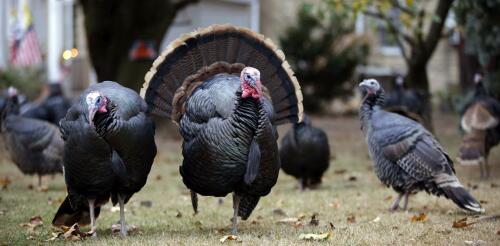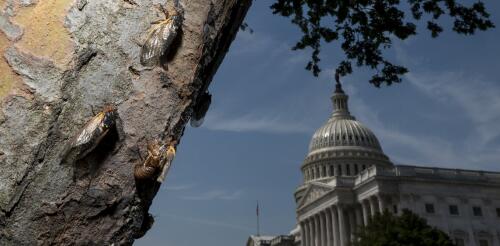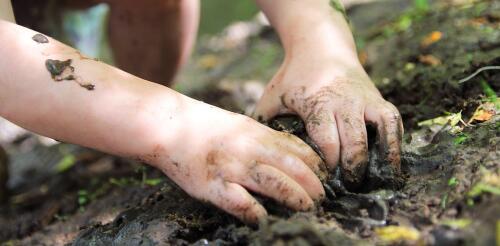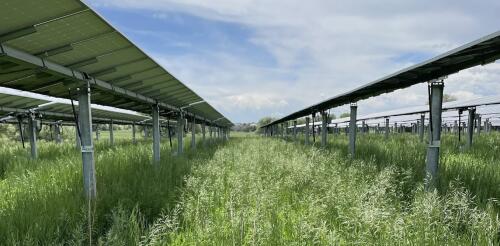Ecology
It’s a simple idea: Stop mowing your lawn in the month of May to let flowers in the lawn, such as dandelions and clover, grow and support bees and other pollinators. “No Mow May” was started in 2019 by Plantlife, a conservation charity based in the United Kingdom, in response to a well-documented loss of meadows and an alarming decline of native plants and animals there. Since then, it has been taken up by many gardeners and conservation advocates in North America. Studies have shown that many flowers that grow in unmown British lawns do support British pollinators. But North America has vastly different ecological communities, composed of unique flora and fauna. If you are interested in supporting pollinators, it is important to consider the ecological context of your yard – and #NoMowMay may not be an effective strategy. As entomology researchers who run programs on pollinators, we see better ways for people in North America to help pollinators fl...
Birdsong is a welcome sign of spring, but robins and cardinals aren’t the only birds showing off for breeding season. In many parts of North America, you’re likely to encounter male wild turkeys, puffed up like beach balls and with their tails fanned out, aggressively strutting through woods and parks or stopping traffic on your street. Wild turkeys were abundant across North America when European settlers arrived. But people killed them indiscriminately year-round – sometimes for their meat and feathers, but settlers also took turkey eggs from nests and poisoned adult turkeys to keep them from damaging crops. Thanks to this unregulated killing and habitat loss, by 1900 wild turkeys had disappeared from much of their historical range. Turkey populations gradually recovered over the 20th century, aided by regulation, conservation funding and state restoration programs. By the early 2000s, they could be found in Mexico, Canada and every U.S. state except Alask...
In the wake of North America’s recent solar eclipse, another historic natural event is on the horizon. From late April through June 2024, the largest brood of 13-year cicadas, known as Brood XIX, will co-emerge with a midwestern brood of 17-year cicadas, Brood XIII. This event will affect 17 states, from Maryland west to Iowa and south into Arkansas, Alabama and northern Georgia, the Carolinas, Virginia and Maryland. A co-emergence like this of two specific broods with different life cycles happens only once every 221 years. The last time these two groups emerged together was in 1803, when Thomas Jefferson was president. For about four weeks, scattered wooded and suburban areas will ring with cicadas’ distinctive whistling, buzzing and chirping mating calls. After mating, each female will lay hundreds of eggs in pencil-size tree branches. Then the adult cicadas will die. Once the eggs hatch, new cicada nymphs will fall from the trees and burrow back underground, st...
Curious Kids is a series for children of all ages. If you have a question you’d like an expert to answer, send it to curiouskidsus@theconversation.com. What is dirt? – Belle and Ryatt, ages 7 and 5, Keystone, South Dakota When you think about dirt, you might picture the rock dust that gets on your pants. But there’s so much more going on in the ground under our feet. When I began studying soil, I was amazed at how much of it is actually alive. Soil is teeming with life, and not just the earthworms that you see on rainy days. Keeping this vibrant world healthy is crucial for food, forests and flowers to grow and for the animals that live in the ground to thrive. Here’s a closer look at what’s down there and how it all works together. Soil is a vibrant ecosystem. Gabriel Jimenez via Unsplash, CC BY-SA...
As societies look for ways to cut greenhouse gas emissions and slow climate change, large-scale solar power is playing a central role. Climate scientists view it as the tool with the greatest potential to reduce carbon dioxide emissions by 2030. In the U.S., the Department of Energy predicts that solar will account for nearly 60% of all new utility-scale electricity-generating capacity installed in 2024. But ideal locations for solar development often overlap with croplands or grasslands used for livestock grazing. Typically, large-scale solar arrays are designed to maximize energy generation, without much consideration for the ecosystems in which they are placed. For example, grading land and removing vegetation can cause erosion and send runoff into waterways. Solar developers have been fined for such environmental violations in Georgia, Massachusetts, Alabama, Idaho and Illinois. There also are concerns about how large solar installations affect animal movement patterns...




